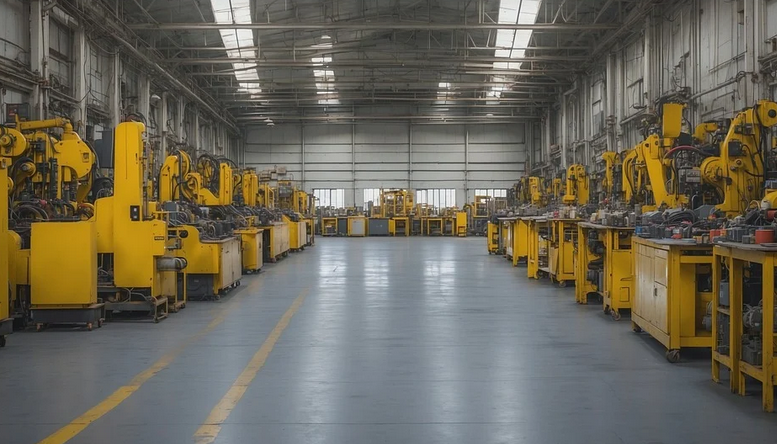Understanding the Power of 309 Stainless Steel
When it comes to welding, few materials stand out quite as much as stainless steel. From its resistance to rust and corrosion to its impressive strength, this versatile metal has become a cornerstone in countless industries. But when we delve into the world of welding, the specifics matter even more—and that’s where 309 stainless steel enters the picture.
309 stainless steel is a popular choice for welding applications because it boasts exceptional corrosion resistance. This unique ability to withstand harsh environments like salt spray and acidic solutions makes it ideal for projects involving coastal structures, chemical processing plants, and even medical equipment.
Welding with Confidence: The Advantages of 309 Rods
The versatility of 309 stainless steel doesn’t stop at its corrosion resistance; it also benefits from excellent weldability. With this in mind, welding rods made from this alloy offer numerous advantages:
**1. Improved Weld Strength:** The higher nickel content within 309 stainless steel enhances the ductility of the metal during welding, leading to stronger welds with improved mechanical properties.
**2. Enhanced Corrosion Resistance:** The higher chromium and nickel levels in this alloy are responsible for its exceptional resistance against corrosion. This means you can rely on your projects even in challenging environments.
**3. Increased Weld Penetration:** 309 stainless steel rods create strong, consistent welds with good penetration depth. This is especially important for applications requiring precise control over joint geometry.
**4. Superior Arc Stability:** 309 stainless steel welding rods offer excellent arc stability, resulting in a more controlled and efficient welding process.
Mastering the Welding Process: A Deeper Look at 309 Rods
Welding 309 stainless steel requires specialized skills and knowledge to achieve optimal results. Choosing the right welding procedure is crucial for creating strong, reliable welds.
**1. Stick Welding (SMAW):** This widely used process utilizes electrodes coated with flux to create a weld pool. 309 rods are often preferred for stick welding due to their ease of handling and consistent performance.
**2. MIG (Gas Metal Arc Welding):** A common choice for thick materials, MIG welding allows for greater speed and efficiency when working with 309 stainless steel.
**3. TIG (Tungsten Inert Gas):** While TIG offers the highest level of control in terms of weld quality, it demands more expertise and specialized equipment than other processes.
**4. Robotic Welding:** A powerful solution for large-scale projects, robotic welding often utilizes 309 stainless steel rods to automate the welding process, reducing human error and ensuring consistent results.
Choosing the Right Weld: Understanding 309’s Applications
With its versatility and reliability, 309 stainless steel welding rods find their way into numerous applications. Their performance shines in:
**1. Automotive Industry:** From chassis to exhaust systems, 309 stainless steel offers superior strength and durability, contributing to the longevity of vehicles.
**2. Marine Construction:** Marine environments demand a material that can withstand harsh conditions. 309 rods are used in constructing ships, docks, and bridges for their exceptional corrosion resistance.
**3. Food Processing:** Stainless steel plays an integral role in food production, and 309 rods ensure the safety of food processing equipment by preventing contamination.
**4. Chemical and Pharmaceutical Industries:** The high purity and strength of 309 stainless steel make it a preferred choice for welding laboratory equipment and manufacturing plants in these industries.
Beyond the Weld: Maintenance and Longevity
Proper maintenance is crucial for extending the lifespan of any welded structure. While 309 stainless steel rods offer exceptional longevity, they can benefit from preventive measures:
**1. Regular Cleaning:** Cleaning the weld area regularly helps prevent rust and corrosion, ensuring long-lasting performance.
**2. Protective Coating:** Applying a protective coating like epoxy paint or sealant prevents damage caused by environmental exposure while keeping your welded structures looking their best
**3. Inspection:** Regular inspections can identify early signs of wear and tear, allowing for timely repairs and maintenance to prevent further deterioration.
The Future of 309 Stainless Steel Welding Rods
In the ever-evolving world of welding technology, the demand for high-quality materials increases. 309 stainless steel rods continue to stand out as a reliable and efficient choice for various applications
**1. Research & Development:** Ongoing research continues to push boundaries in welding practices and material advancements. The future of 309 stainless steel welding rods lies in exploring new techniques that improve weld quality, efficiency, and even sustainability.
**2. Automation:** As automation becomes increasingly prevalent in the manufacturing world, the use of robotic welding technologies powered by 309 stainless steel rods will continue to grow. This not only increases efficiency but also ensures consistent and precise welds in various challenging environments
**3. Circular Economy:** With a growing focus on sustainability, recycling and reusing 309 stainless steel plays an important role in minimizing environmental impact and promoting responsible manufacturing practices.
